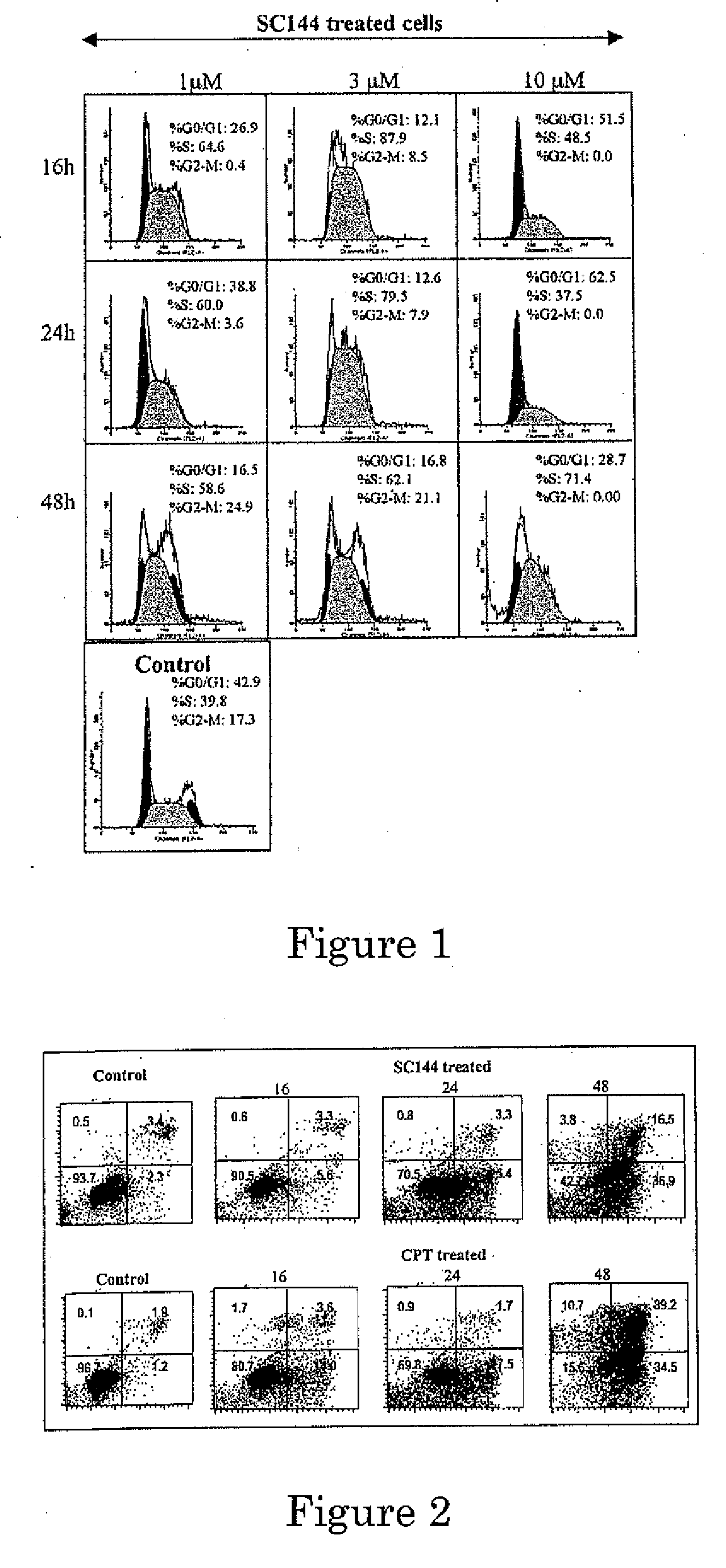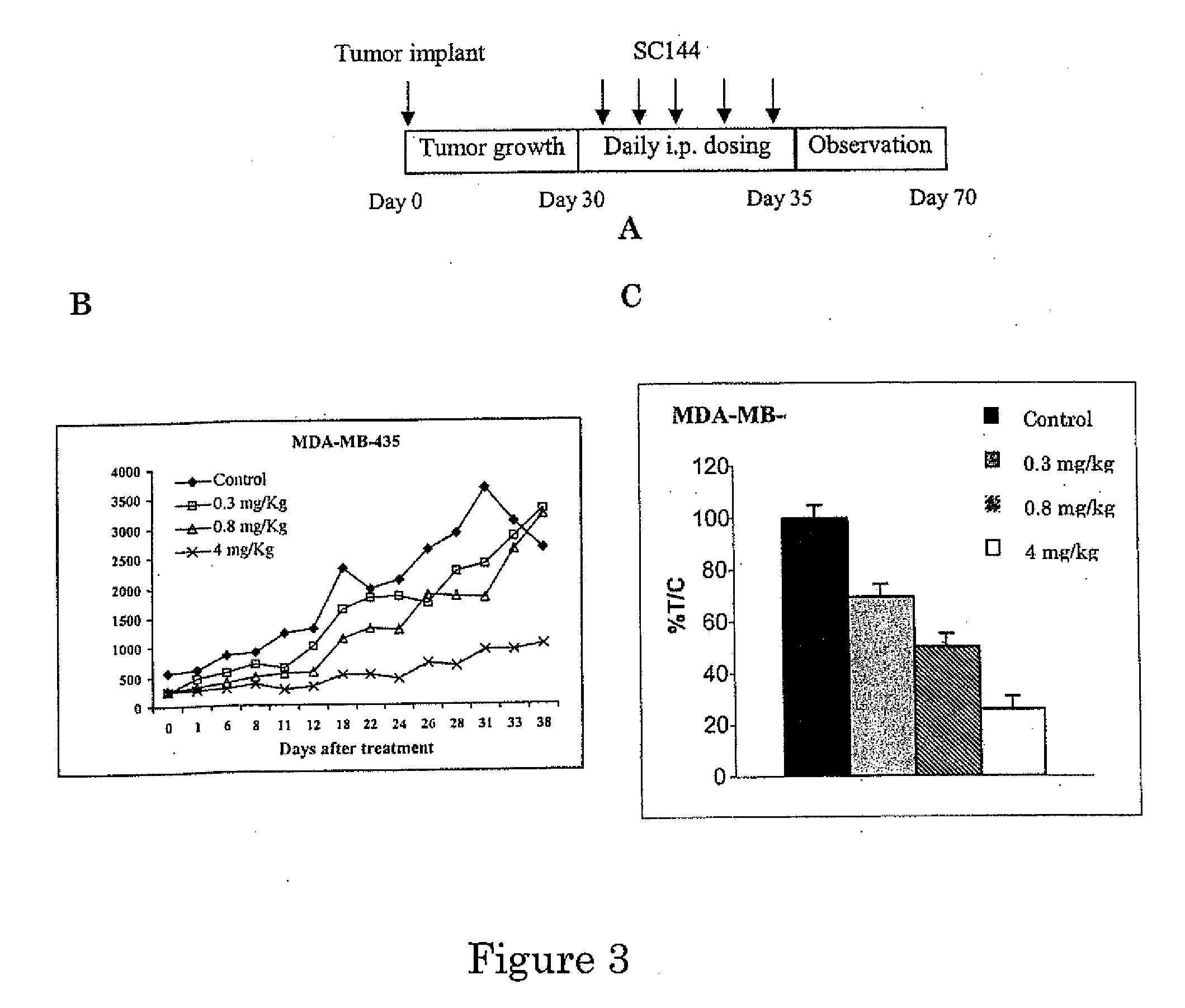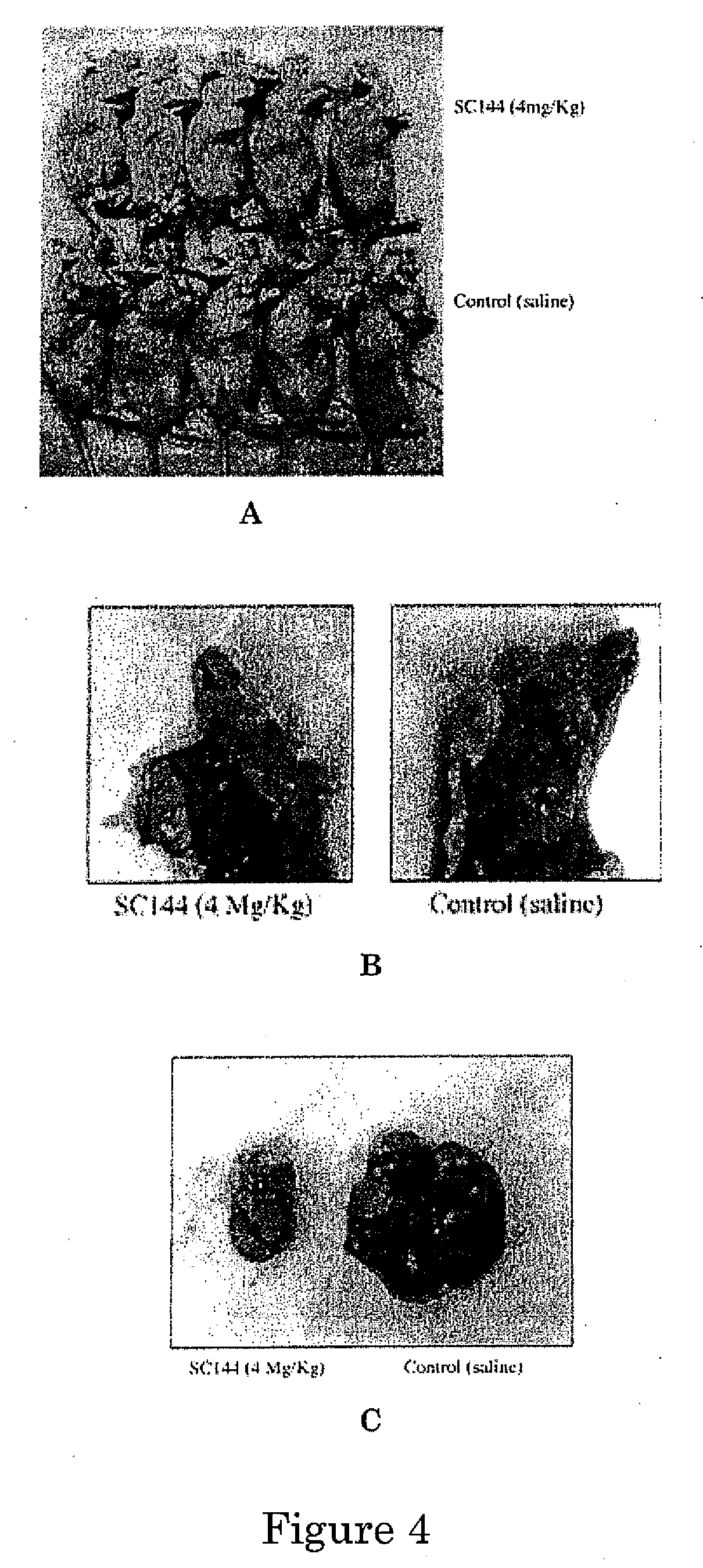Novel compounds for treatment of cancer and disorders associated with angiogenesis function
a technology of angiogenesis and therapeutic compounds, which is applied in the direction of drug compositions, biocides, metabolic disorders, etc., can solve the problems of inability to achieve easy and straightforward ways with current technologies, and inability to achieve oral anticancer drugs. , to achieve the effect of modulating (increasing or decreasing) expression and low density lipoprotein
- Summary
- Abstract
- Description
- Claims
- Application Information
AI Technical Summary
Benefits of technology
Problems solved by technology
Method used
Image
Examples
example i
[0139]All reactions were carried out under a nitrogen atmosphere. Progress of the reaction was monitored by TLC on silica gel plates (Merck 60, F254, 0.2 mm). Organic solutions were dried over MgSO4; evaporation refers to removal of solvent on a rotary evaporator under reduced pressure. Melting points were measured using a Gallenkamp apparatus and are uncorrected. IR spectra were recorded as thin films on Perkin-Elmer 398 and FT 1600 spectrophotometers. 1H NMR spectra were recorded on a Brüker 300-MHz spectrometer with TMS as an internal standard: chemical shifts are expressed in δ values (ppm) and coupling constants (J) in Hz. Mass spectral data were determined by direct insertion at 70 eV with a VG70 spectrometer. Merck silica gel (Kieselgel 60 / 230-400 mesh) was used for flash chromatography columns. Elemental analyses were performed on a Perkin-Elmer 240C elemental analyzer, and the results are within ±0.4% of the theoretical values. Yields refer to purified products and...
example ii
[0183]We built a 10,000 compound database of reported and patented integrase inhibitors, which are in some instances likely to target additional DNA processing enzymes, possibly even more potently than integrase. Using this database, we developed various pharmacophore models followed by toxicity prediction using ADMET Predictor software package (Simulations Plus, Inc., Lancaster, Calif.) and cluster analysis to separate a majority of antiviral compounds from cytotoxics. On the basis of these pharmacophores, we identified the salicylhydrazide class of compounds as potential leads for inclusion in our anticancer drug discovery program. Pursuing development of this class of compounds, we searched our in-house multiconformational database of ˜4.5 million compounds and identified >2,200 compounds that possess common structural features and pharmacophore fragments. We then acquired 950 analogues from commercial sources and subjected them to 3-(4,5-dimethylthiazol-2-yl)-2,5-diphenyltetrazo...
example iii
[0209]
TABLE 750% Cytotoxic concentration (IC50) values of a series of SCs in HEY ovarian cancer cellscompdStructureIC50SC2012SC2021SC2036SC2041SC2056SC2061SC2076SC2084SC2098SC2101SC21110SC2121SC21312SC2141SC21512SC2165SC2174SC2184SC2192SC2204SC2214SC2228SC2234SC2244SC2252SC2265SC2276SC2286SC2298SC2303SC2313SC2326SC2335SC2348SC2357SC2362SC2377SC2383SC2393SC2405SC2415S02425SC2436SC24415SC24515SC2461SC24714SC2482SC2492SC2502SC25115SC25216SC25312SC25417SC25514SC2563SC2572SC2582SC25918SC26010SC26111SC26211SC2635SC2645SC2655SC2667SC26810SC2705SC2716SC2727SC27311SC27411SC27512SC27613SC27714SC27813SC2796SC2806
PUM
| Property | Measurement | Unit |
|---|---|---|
| Temperature | aaaaa | aaaaa |
| Temperature | aaaaa | aaaaa |
| Temperature | aaaaa | aaaaa |
Abstract
Description
Claims
Application Information
 Login to View More
Login to View More - R&D
- Intellectual Property
- Life Sciences
- Materials
- Tech Scout
- Unparalleled Data Quality
- Higher Quality Content
- 60% Fewer Hallucinations
Browse by: Latest US Patents, China's latest patents, Technical Efficacy Thesaurus, Application Domain, Technology Topic, Popular Technical Reports.
© 2025 PatSnap. All rights reserved.Legal|Privacy policy|Modern Slavery Act Transparency Statement|Sitemap|About US| Contact US: help@patsnap.com



